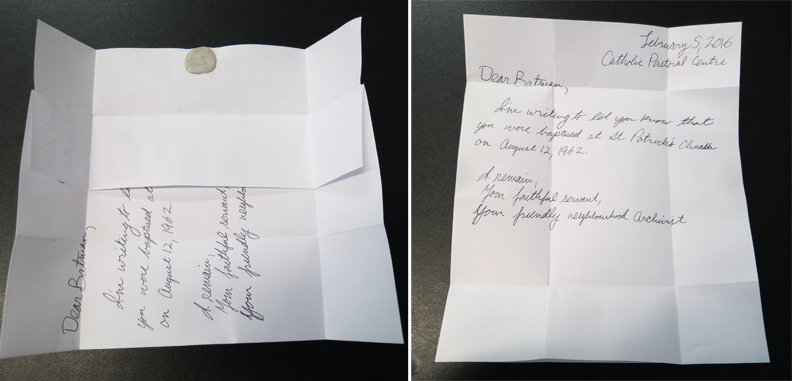"The winter dead wait...for the earth to relent and receive them."
- The Winter Vault by Anne Michaels
February is finally winding down and we can start to look forward to the spring thaw.
In the 19th century, before ground breaking equipment existed, the frozen earth had greater implications for cemeteries. As they could not be buried during the winter months, corpses were often stored until spring in outbuildings known as "winter vaults" or "dead houses."
The Winter Vault is the centerpiece of St. Michael's Cemetery in Toronto, placed at the intersection of two main axes. It was designed in 1855 by Joseph Sheard, a prolific architect who went on to become Mayor of Toronto in 1871. While he was Foreman of Public Works, Sheard was known for refusing to build the gallows to hang two leaders of the Upper Canada Rebellion, Samuel Lount and Peter Matthews.
For a fee of £18, Sheard drew the architectural plans and specifications for the dead house and cemetery fences, and supervised their construction. The total cost of materials and labour was £326.
The winter vault is a Gothic-style building, which was the architectural fashion of the time. Its octagonal shape followed a mid-19th century fad for eight sided buildings that originated in the United States. Octagonal winter vaults, however, are unique to southern Ontario. There are five existing octagonal vaults in the region, including those in Aurora, King City and Richmond Hill. They are designated as buildings of historical and architectural value under the Ontario Heritage Act. The octagonal shape has the added practical value of offering more wall space for platforms on which to place the caskets.
To mark the 150th anniversary of the Archdiocese of Toronto in 1991, Catholic Cemeteries and Funeral Services decided to restore the winter vault at St. Michael's Cemetery. Specialists at Restoration Summit replaced some of the massive Douglas fir timbers and other wooden elements that had succumbed to rot. Cedar shingles and copper plating were used to repair the roof and cupola for a historically correct finish. Six hundred bricks on the exterior wall and buttresses had been cracked by tree roots and required replacement. To match the patina of the exterior masonry, bricks were salvaged from the interior walls to use outside. The restoration work received an Award of Merit from the Toronto Historical Board in 1993.
 |
| ARCAT Staff Photo Archdiocesan staff visit the restored Winter Vault at St. Michael's Cemetery during a guided tour in 2010.* |
 |
| Photographs Special Collection, PH32S/08P In June 1992, Auxiliary Bishop M. Pearse Lacey unveiled a historical plaque rededicating the structure and marking the sesquicentennial year. |
Toronto author and poet Anne Michaels wrote a novel called The Winter Vault in 2009. To promote its publication, she gave a book reading inside the winter vault at St. Michael’s Cemetery.*
*Note: For the protection of the cemetery grounds and monuments, St. Michael’s Cemetery gates are now closed. To visit the cemetery please contact Mount Hope Cemetery at (416) 483-4944.























